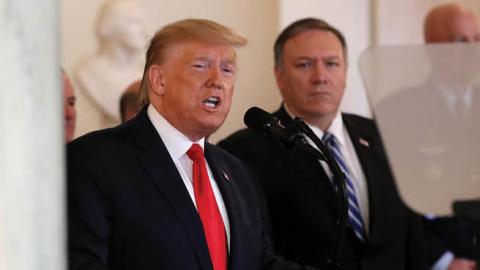The agreement between the United States and the Taliban signed last weekend might pave the way for the withdrawal of US troops, but is unlikely to bring peace to Afghanistan. The week-long ‘ reduction in violence ’ in the last week of February, which provided a fig leaf for the agreement to be portrayed as a ‘peace deal,’ has already given way to renewed Taliban attacks across the country.
The deal allows US President Donald Trump to say that he is keeping his promise to end ‘ endless wars ’. The US went into Afghanistan after the 9/11 attacks to deny safe haven to international terrorists who attacked the US. Now that the threat of al-Qaeda has "receded,()"https://www.brookings.edu/blog/order-from-chaos/2019/09/10/al-qaida-tod… and the US has developed other means of keeping itself safe from terrorism, why squander further blood and treasure in Afghanistan?
But only time will tell whether the Taliban will honour their only major concession in the Doha agreement — the promise to “prevent the use of Afghan soil by any international terrorist groups or individuals against the security of the United States and its allies”.
For their part, the Taliban see themselves as victors against a superpower, and Islamist militants all over the world see the outcome in Afghanistan the same way.
A flawed deal
As a totalitarian ideological group, the Taliban had been tormenting the Afghan people long before the Americans showed up. They see the prospect of a US military withdrawal as an opportunity to restore the Emirate they had created with Pakistan’s help.
In the Taliban’s mind, their Emirate still exists. That is why throughout their agreement with the US, there are multiple references to the ‘Islamic Emirate of Afghanistan which is not recognized by the United States as a state and is known as the Taliban’.
Clause 5 of Part Two of the agreement says that the Emirate/ Taliban “will not provide visas, passports, travel permits, or other legal documents to those who pose a threat to the security of the United States and its allies to enter Afghanistan”. Considering that only governments perform those functions, the inference that the Emirate might even be recognised as legitimate by the US someday is obvious.
It can be argued that a peace deal requires give and take, and semantics that please one or another party are an essential part of diplomatic negotiations. But in the case of the document titled ‘ Agreement for Bringing Peace to Afghanistan, ’ there appears to be deliberate obfuscation and total disregard for what comes next in the effort to get a televised signing ceremony.
For example, the Doha agreement says that “up to five thousand (5,000) prisoners” of the Taliban would be “released by March 10, 2020, the first day of intra-Afghan negotiations”. But this commitment has been made without first securing concurrence of the Afghan government, which actually holds the prisoners.
The subject of prisoners is covered differently in the parallel Joint Declaration with the Kabul government, recognised as the Islamic Republic of Afghanistan. That document only talks about “a U.S.-facilitated discussion with Taliban representatives on confidence-building measures, to include determining the feasibility of releasing significant numbers of prisoners on both sides”.
Given such flaws within the agreement, it is not difficult to see how it might unravel, just as it is not difficult to understand why it was signed in the first place.
Comparisons with Paris Peace Accords
There is widespread sentiment in America that the US could not win, or had even lost, the war in Afghanistan, and that “Afghanistan is no longer the most urgent or important national security challenge facing the United States”. Patience and history consciousness are not among the many virtues of the American public or even some of their leaders.
The latest deal seems modelled on the 67-page ‘Agreement on ending the war and restoring peace in Vietnam’ signed on 27 January 1973 in Paris, which marked the end of US military involvement in ‘Indochina’. Two years later, in 1975, one of the signatories of that agreement, the Provisional Revolutionary Government of South Vietnam (the Viet Cong) overran US-backed South Vietnam with the help of another signatory to the agreement, the Communist Democratic Republic of Vietnam.
There are significant differences, though, and not just in terms of the length of the latest document, which comprises only four typed pages. Unlike North Vietnam signing the Paris Peace Accords, the Taliban’s principal backer, Pakistan, is not a signatory to the agreement.
Moreover, while the Paris Accords were signed by then-US Secretary of State, William Pierce Rogers, after being negotiated by Henry Kissinger, the current Secretary of State — Mike Pompeo — let the Doha Agreement be signed by its negotiator, Zalmay Khalilzad. If the deal holds up, the Trump administration will be able to take the credit. If it does not, Khalilzad can take the blame.
Afghanistan is not South Vietnam. The Afghans are a resilient nation that can and most likely will fight the Taliban, with or without US’ assistance. Many US leaders, especially in the military and intelligence community, also understand that complete disengagement from Afghanistan might not be as easy as walking away from Vietnam had proved to be.
Read in The Print

















